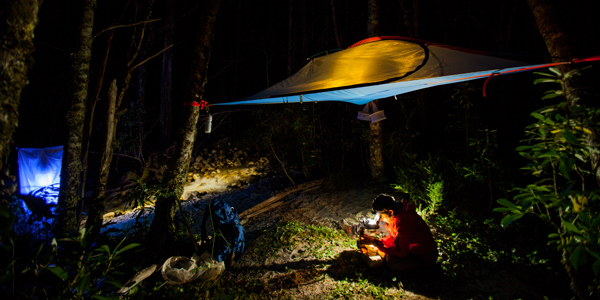
Scientific Storyteller
Eating bugs, hiking and collecting insects for days on end around the northern Patagonia ice field were common occurrences for R. Isaí Madriz during his time as a Fulbright-National Geographic Digital Storytelling Fellow.
Madriz (’17 PhD entomology) explored the Aysén region of Chile for rare insects vanishing due to deglaciation.
“The problem with the area I study is that it is very inaccessible. The idea for me is to go and document the primitive lineages I am focused on,” Madriz says. “As the glaciers start melting, the species start thriving because there is a lot of water for them. But, as the glaciers start disappearing, it could have a damaging effect on them.”
His experiences inspired him to create a board game to share his knowledge with students around the world.
The adventure
Madriz’s fellowship from September 2017 to June 2018 included preparation, excursions and developing the board game.
The night before an excursion, Madriz would pack not knowing if he’d be away for a few hours or a few days. The length of each trip depended on when he found the desired specimens. He’d pack a raft, paddles, a helmet, tree tent, microscope, solar panels and food. He’d also pack some necessary tools for attracting insects—a cloth sheet and a black light. Then he’d set out on foot, bike or raft.
Many nights he would set up camp under a tree tent and use his microscope to examine insects that fell prey to his trap. His excursions lasted anywhere from two days to two weeks. Once he found the insects he wanted and traveled back to his home studio, he would photograph the bugs for hours and days at a time.
Madriz documented his findings on his National Geographic blog.
“My goal is to compile more stories and make them available in a PDF or a book,” Madriz says.
Hidden diversity
To share his experiences and educate youth around the world, Madriz created a board game: Hidden Diversity Patagonia. Similar to the way he explored Chile, players move around the game board to collect insects, tools and invasive species. To advance, players answer questions about insect biodiversity and climate change. The board was designed by Madriz using satellite images of the northern Patagonia ice field. Madriz listened to feedback and customized the game’s illustrations and text according to the education level of the students.
“I’m developing the game so there can be a better understanding of the facts I am trying to communicate, and also will engage kids into something fun,” Madriz says.
Hidden Diversity Patagonia is being used by educators in countries all around the world including Chile, Mexico, Canada, Portugal and classrooms at Iowa State.
The greater good
Madriz is pleased the game is connecting him back to Iowa State.
“I like that I am able to give back to Iowa State because it really helped shape me into the scientist I am today,” Madriz says. “Peers I met there challenged me and gave me the flexibility to think the way I do.”
Madriz is looking for funding partners to continue his research following his fellowship. He plans to stay in Chile and hopes to one day be able to offer Iowa State students the opportunity to join his research program.
“I am the only one in my field doing this research full time in the Aysén region. It would be a disservice to stop my research now,” he says.



